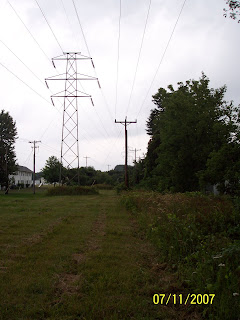
This is the cold frame my Go-To-Man built for me out of scrap wood collected from a local shed factory's scrap pile & some upholstery plastic bought with a coupon. Yes, I know you thought that it was just for covering your Aunt's living room furniture.
This little project came after I had spent some time curled up on the couch reading vintage MEN mags about harvesting a salad in the depths of winter. Reality was that shortly after this pic was taken everything growing in here froze.
Upgrade for this coming fall/winter is to insulate the end panels with scrap insulation foam covered with foil (reflection factor) and add a second layer of plastic so there is a 2" or so dead air space between. Will run tests to see if side vents need to be installed.

To the left is our cold frame minus the lid in early June.
There is spinach along with mixed salad greens, a few red onions intended to be compost, beets, and some marigolds for bug protection.
Directly behind in a landscape timber bed is about 8 green bell pepper plants and two red something or other peppers.
To the right is two rhubarb plants on their 3 rd year.
Wood chip mulch curtsy of my city organic dump a.k.a. free.

Almost two months later about the same time of day.
As you can see very shady. In an urban environment there is allot less control in where you plant or what affects your garden outside your lot limits such as neighbor's walnut tree that shade's the very back of my lot/farm.
Despite this so far I have picked 1/2 a bushel of green peppers and numerous salads for DH & myself.
Last year there were 3 hanging baskets of Nasturtiums so this year via falling seeds the pepper bed is full of those edible blooms. To the left in the houseplant container is my Husband's Bloody Butcher Heirloom Tomato plant. A great salad type tom very prolific. Mulched with used hay from our buns.
 A Winter's supply of celery growing in a raised bed 2' wide by 6' long. There are also some volunteer tomato plants growing in the far back portion. Not sure what type don't remember ever planting this variety - pale round yellow almost beefsteak like. Of course could be something that popped up from scavenged compost ingredients from a local restaurant.
A Winter's supply of celery growing in a raised bed 2' wide by 6' long. There are also some volunteer tomato plants growing in the far back portion. Not sure what type don't remember ever planting this variety - pale round yellow almost beefsteak like. Of course could be something that popped up from scavenged compost ingredients from a local restaurant. 



 Almost two months later about the same time of day.
Almost two months later about the same time of day.








